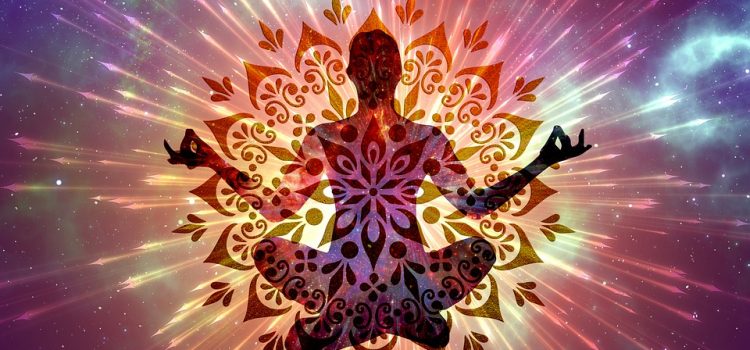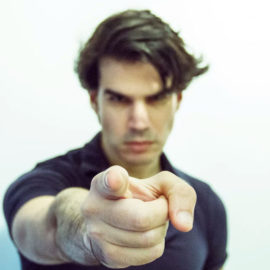

This article gives you a glimpse of what you can learn with Shortform. Shortform has the world’s best guides to 1000+ nonfiction books, plus other resources to help you accelerate your learning.
Want to learn faster and get smarter? Sign up for a free trial here .
How do you access higher levels of consciousness? What states of consciousness are the human brain capable of?
In our day-to-day waking lives, we experience a very limited spectrum of consciousness in the context of what is possible. The human brain is capable of accessing states of consciousness that you wouldn’t even imagine are possible unless you experience them first-hand.
Here’s a look at the methods for breaking free of the bounds of ordinary, everyday awareness and traversing into the higher planes of consciousness.
The Continuum of Consciousness
We have only just begun to understand the most basic elements of the human mind. While scientists have started to develop the ability to directly manipulate the brain, no one really knows how vast the continuum of consciousness is. The continuum of consciousness consists of every mental state a being can experience, and humanity likely only exists within a small portion of it.
Compare the continuum of consciousness to the electromagnetic spectrum. Human beings can only see and experience a sliver of the electromagnetic spectrum through visible color and light, but scientists have discovered parts of the spectrum that can’t be interacted with without technology such as radio waves, x-rays, and microwaves. Mental states may exist on a similar spectrum, with the organic human brain only experiencing a small fraction of the full spectrum of consciousness.
While the use of psychedelic drugs and the experiences of “visions” were once seen as a way to connect to the divine, modern society discourages people from exploring higher levels of consciousness, labeling those who do as addicts, liars, or mental patients. However, even with substance use or abnormal brains, humans are still limited by the organic limitations of the human mind.
TITLE: Homo Deus
AUTHOR: Yuval Noah Harari
TIME: 63
READS: 114.8
IMG_URL: https://www.shortform.com/blog/wp-content/uploads/2020/11/homo-deus-cover.png
BOOK_SUMMARYURL: homo-deus-summary-yuval-noah-harari
AMZN_ID: XYZ
Methods for Accessing Higher Planes of Consciousness
While we will likely never know all possible states of consciousness, the spectrum of consciousness that we can access is still vast, extending well beyond our ordinary, everyday awareness. Here are some ways humans can access different levels of consciousness.
Psychedelics
According to Brian Muraresku, the author of The Immortality Key, humans have yearned to experience higher levels of consciousness since ancient times. One way to do that was through the ingestion of psychedelic substances, which provided a gateway to a one-of-a-kind experience of spiritual transformation and union with something bigger than ourselves.
In a 2022 study, the Johns Hopkins Center for Psychedelic and Consciousness Research reported that 75% of respondents rate a single psychedelic session as one of the top five—or the single most—meaningful experiences of their life. One of the most common experiences people report after having a psychedelic session is ego death: a sense of oneness with everything. They also often report feeling a union with the divine, and a sense that they’re transformed in some meaningful way.
A 2016 study of cancer patients who underwent a psilocybin treatment session, in which 87% of participants reported increased life satisfaction and well-being that lasted for months. One of those participants was a woman whose diagnosis had sent her into an existential crisis. Although she had identified as an atheist, she said during her session she had experienced the feeling of “being bathed in God’s love.”
Beyond acting as a gateway to higher levels of consciousness, researchers on the psychedelic frontier believe psychedelics have great potential for easing end-of-life suffering, fear of death, and healing psychological trauma.
| What Are Psychedelics and How Are They Used? The term “psychedelics” is typically used to refer to chemicals or plants that have psychoactive (mind-altering) properties when ingested by humans. These substances can create profound changes in perception, thought patterns, and mood. Examples include psilocybin (found in “magic mushrooms”), LSD, DMT, ayahuasca, mescaline, and many others—some of which are synthetic and others that occur naturally. Many cultures around the world and throughout history have used psychedelics, most often for spiritual and healing purposes, and consider them “plant medicines.” Anthropologists often use the word entheogen when referring to psychedelics used for these purposes. In Greek, the word “entheogen” means “generating the god within” and Muraresku argues that this is exactly the context in which psychedelics were used in ancient Greece. People in the modern world also use psychedelics recreationally, outside of ritual cultural context. Sometimes people use them just for “fun” or out of curiosity, but many recreational users also report a desire for a spiritual or mind-expanding experience, or to attempt to relieve anxiety. Although psychedelics are safer than most other types of recreational drugs, they necessarily come with risks, since they alter your perception. Users can have extremely negative “trips” that can have long-lasting effects on their mental health. This is why experts stress the crucial importance of context for psychedelic experiences. |
Breathwork
Breath is another tool for accessing alternate states of consciousness. According to Wim Hof (a.k.a. the Iceman), the author of The Wim Hof Method, breathwork can help you gain power of your unconscious physical processes (e.g. heartbeat) and reach enlightenment.
Hof failed to achieve greater spiritual understanding by reading ancient Indian scriptures. It was only when he stopped thinking and focused instead on merely feeling the cold and his breath that Hof found what he calls the “inner voice”—an innate understanding of what you truly need in any particular moment. Similarly, Hof argues that by continually practicing his method and focusing on the feelings in your body instead of stimuli in the outside world, you can find your own inner voice—which will lead you to a higher truth.
| How Hof’s Techniques Compare to Other Paths to Enlightenment Although Hof may be unique in connecting cold exposure to spiritual enlightenment, several traditions have connected breathwork and meditation to a higher sense of spirituality. Buddhists believe that meditating in several different ways can lead to enlightenment. Hof’s techniques appear most similar to the Buddhist meditation practice of shamatha, which involves paying attention to your body, as well as metta, which involves sending loving thoughts out into the world. In contrast, holotropic breathwork practitioners believe that breathwork can improve your sense of spirituality by helping you access higher levels of consciousness. |
Lucid Dreaming
While whether lucid dreaming can be considered a higher state of consciousness (in a spiritual sense) is up to debate, it’s definitely a higher cognitive state than a regular dream because it requires metacognition of one’s state.
In a lucid dream, you become aware that you’re dreaming as opposed to being fully immersed. Some lucid dreamers are able to voluntarily control their actions within their dreams.
Researchers can verify when someone is lucid dreaming by pre-arranging eye movements and hand signals while the subject is awake, then detecting the subject making those same eye movements and hand signals while sleeping (the hand signals are detected by fMRI—remember, you can’t move during REM sleep because of muscle atonia).
According to Matthew Walker, the author of Why We Sleep, less than 20% of people are capable of lucid dreaming, suggesting it might not be a hugely advantageous capability.
How to Start Lucid Dreaming
One study found that you can increase your chances of having lucid dreams in just one week by combining these three techniques:
- Reality testing—constantly check your waking environment to see if you’re dreaming. This develops your ability to determine your state of consciousness, which you can then carry over to your sleeping state.
- Break up your sleep—wake up after five hours, stay up for a short time, then go back to sleep. (While waking up after five hours may not seem ideal, the study participants didn’t report any negative effects on sleep quality.)
- Mnemonic induction of lucid dreams (MILD)—upon waking up after five hours, tell yourself, “The next time I’m dreaming, I’ll remember that I’m dreaming.” This sends a signal to your brain, forming an intention that you then carry with you into sleep. In the study, those who fell back asleep within the first five minutes after practicing this technique showed a 47% increase in lucid dreaming.
TITLE: Why We Sleep
AUTHOR: Matthew Walker
TIME: 22
READS: 75.7
IMG_URL: https://www.shortform.com/blog/wp-content/uploads/2020/01/whywesleep_cover.jpg
BOOK_SUMMARYURL: why-we-sleep-summary-matthew-walker
AMZN_ID: B06ZZ1YGJ5
Final Words
Consciousness is vast, and we still have a very limited understanding of this phenomenon as far as science goes. However, humans have been accessing higher levels of consciousness for millennia through various methods, including (but not limited to) ingestion of psychedelic substances, controlled breathing, and sleep.
If you enjoyed our article about higher levels of consciousness, check out the following suggestions for further reading:
The Power of Your Subconscious Mind
In the self-improvement classic The Power of Your Subconscious Mind, Joseph Murphy claims that all of your life experiences are the result of the interaction between your conscious and subconscious minds: Your subconscious mind creates your life experiences according to your habitual conscious thoughts and ingrained beliefs. Murphy argues that you can dramatically improve your life experiences by using your conscious mind to imprint positive thoughts and beliefs upon your subconscious mind.
Many people feel like they have no control over what happens in their lives. According to best-selling author Vadim Zeland, they feel like this because they’re not conscious of how their thoughts and emotions create their reality.
In Reality Transurfing Steps I–V, Zeland redefines reality, arguing that we live in a world of consciousness in which infinite versions of reality exist simultaneously—and what you identify as reality is just one version of it. The way you think and feel about your life experiences determines which one of these infinite versions of reality exists for you. Therefore, consciously choosing the way you think and feel allows you to control which version of reality you live in.

Want to fast-track your learning? With Shortform, you’ll gain insights you won't find anywhere else .
Here's what you’ll get when you sign up for Shortform :
- Complicated ideas explained in simple and concise ways
- Smart analysis that connects what you’re reading to other key concepts
- Writing with zero fluff because we know how important your time is






